↧
Seared chicken with avocado-and-corn salsa
↧
Spring pavlovaSpring pavlova
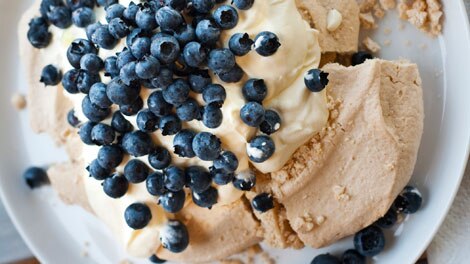 The secret of a pavlova is in the cooking. The oven must not be too hot or too low – you want the pav to be crunchy on the outside without being too browned. Beginners may have to practise a couple of times to master a good pavlova, and you may have to adjust your oven temperature, as every oven is different.
The secret of a pavlova is in the cooking. The oven must not be too hot or too low – you want the pav to be crunchy on the outside without being too browned. Beginners may have to practise a couple of times to master a good pavlova, and you may have to adjust your oven temperature, as every oven is different.
↧
↧
Strawberry sorbet with vanillaStrawberry sorbet with vanilla
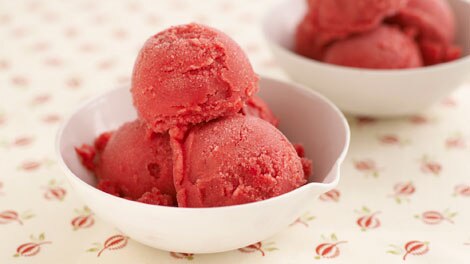 Make this tantalising sorbet when the fruits are at their best, meaning
when you smell their sweet fragrance as soon as you enter the
greengrocer's. The sorbet is best eaten freshly made, but keeps well for
three to four days, well-covered, in the freezer.
Make this tantalising sorbet when the fruits are at their best, meaning
when you smell their sweet fragrance as soon as you enter the
greengrocer's. The sorbet is best eaten freshly made, but keeps well for
three to four days, well-covered, in the freezer.
↧
Chicken and rice casserole with pine nuts
Heat oil in a non-stick saucepan and stir-fry onion and bacon for 1
minute. Add chicken pieces and stir-fry for 3 minutes before adding the
peas, rice and stock. Season with salt and pepper and stir briefly.
Cover pan and simmer for 20 minutes.
When cooked, sprinkle with pine nuts and serve.
When cooked, sprinkle with pine nuts and serve.
↧
Spring suckling lamb with rosemary polentaSpring suckling lamb with rosemary polenta
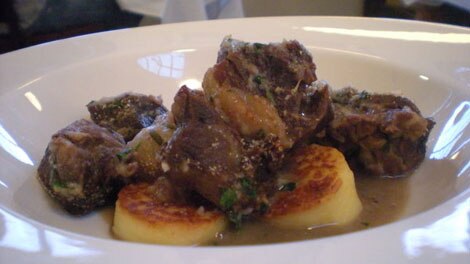 "Abbacchio", Italian for suckling lamb, is a typical dish from Lazio, and often prepared for Sunday lunches with the whole family.
"Abbacchio", Italian for suckling lamb, is a typical dish from Lazio, and often prepared for Sunday lunches with the whole family.
↧
↧
Barbecued Mexican meatBarbecued Mexican meat
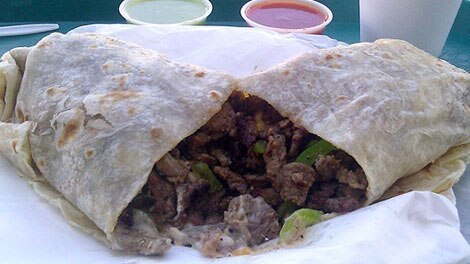 Margarita Domínguez comes from the north of Mexico, where the meat barbecued the Mexican way reigns. This is also the favourite dish of the current President of Mexico, Felipe Calderón.
Margarita Domínguez comes from the north of Mexico, where the meat barbecued the Mexican way reigns. This is also the favourite dish of the current President of Mexico, Felipe Calderón.The sauce and guacamole will serve two.
↧
Couscous, asparagus and chickpea saladCouscous, asparagus and chickpea salad
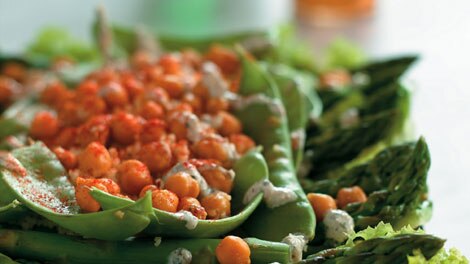 This recipe is a summer dish that's healthy and easy to prepare. Chef Hassan M'Souli from Sydney's Out of Africa restaurant shares his recipe for a salad of couscous, asparagus and chickpeas.
This recipe is a summer dish that's healthy and easy to prepare. Chef Hassan M'Souli from Sydney's Out of Africa restaurant shares his recipe for a salad of couscous, asparagus and chickpeas.↧
Beetroot-marinated kingfish carpaccioBeetroot-marinated kingfish carpaccio
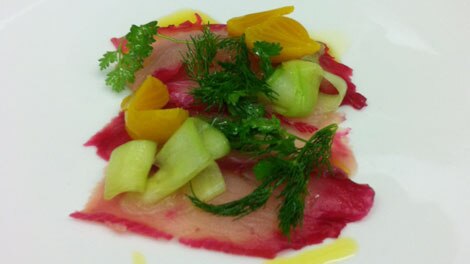 Chef Nathan Morphett and Franceso Ravanelli from Melbourne’s Il Solito Posto share their recipe for beetroot-marinated kingfish carpaccio. Although it takes a day to prepare, this seasonal Italian recipe is well worth the time. It's inspired by the southern coastal food of Italy with the addition of insalata di finocchi (fennel salad) – a very typical side dish from Sicily.
Chef Nathan Morphett and Franceso Ravanelli from Melbourne’s Il Solito Posto share their recipe for beetroot-marinated kingfish carpaccio. Although it takes a day to prepare, this seasonal Italian recipe is well worth the time. It's inspired by the southern coastal food of Italy with the addition of insalata di finocchi (fennel salad) – a very typical side dish from Sicily.
↧
Stuffed chillies in walnut sauceStuffed chillies in walnut sauce
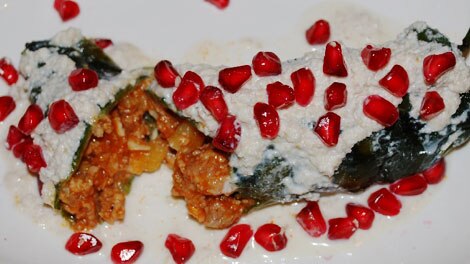 Neri López shares this Mexican classic: poblano chillies in walnut sauce. The large chillies are cooked, stuffed, and cooked again, then finally served in a sumptuous walnut sauce.
Neri López shares this Mexican classic: poblano chillies in walnut sauce. The large chillies are cooked, stuffed, and cooked again, then finally served in a sumptuous walnut sauce.
↧
↧
Minted lamb and mushroom kebabsMinted lamb and mushroom kebabs
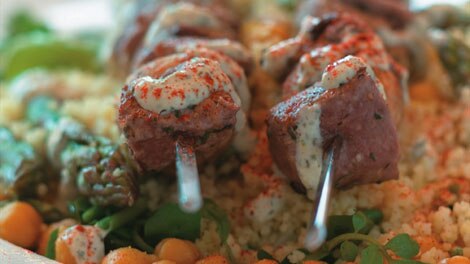 Chef Hassan M’Souli from Sydney's Out of Africa introduces this recipe for Moroccan minted lamb and mushroom kebabs. This is a great example of a Middle Eastern salad that's easy to prepare (it can be made the day before and refrigerated), and versatile as you can replace the lamb with beef. The combination of mint and yoghurt gives the dressing a fresh taste.
Chef Hassan M’Souli from Sydney's Out of Africa introduces this recipe for Moroccan minted lamb and mushroom kebabs. This is a great example of a Middle Eastern salad that's easy to prepare (it can be made the day before and refrigerated), and versatile as you can replace the lamb with beef. The combination of mint and yoghurt gives the dressing a fresh taste.
↧
Spiced tunaSpiced tuna
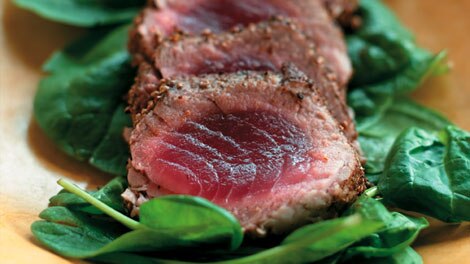 Chef Hassan M’Souli from Out of Africa explains the key to cooking with tuna is to keep the cooking time short, don’t overcook the tender flesh of the fish. This inventive take uses a powerful mix of Moroccan spices, freshly ground as a ‘crumb’ to coat the tuna. The fish is quickly pan fried and finished off in the oven for a few minutes of cooking to retain the sweet and subtle flavour of the tuna combined with the fragrant spices.
Chef Hassan M’Souli from Out of Africa explains the key to cooking with tuna is to keep the cooking time short, don’t overcook the tender flesh of the fish. This inventive take uses a powerful mix of Moroccan spices, freshly ground as a ‘crumb’ to coat the tuna. The fish is quickly pan fried and finished off in the oven for a few minutes of cooking to retain the sweet and subtle flavour of the tuna combined with the fragrant spices.
↧
Smoked eel parcelSmoked eel parcel
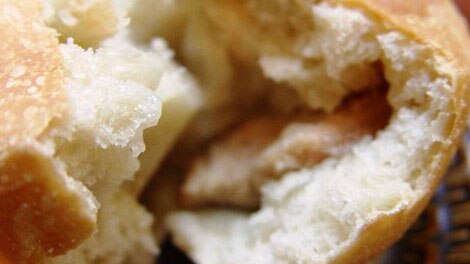 No wonder the Dutch love their eel – it's one of the most versatile fish. When smoked, it's meaty and delicate at the same time. Here, it is served a hot surprise parcel. Chef Geert Elzinga takes Anneke Mackay-Smith to the Sydney Fish Market.
No wonder the Dutch love their eel – it's one of the most versatile fish. When smoked, it's meaty and delicate at the same time. Here, it is served a hot surprise parcel. Chef Geert Elzinga takes Anneke Mackay-Smith to the Sydney Fish Market.
↧
Green beans with fetta dressingGreen beans with fetta dressing
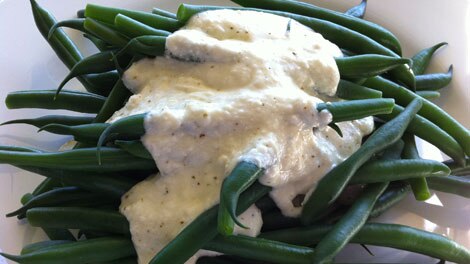 Traditionally, green beans feature in various casseroles with meat, poultry, potatoes and lots of tomatoes.
Traditionally, green beans feature in various casseroles with meat, poultry, potatoes and lots of tomatoes.Green beans, along with other varieties, have being consumed in Greece since Ancient times.
This recipe uses a fetta dressing. Fetta is the most well-known Greek cheese in the world. It is usually made from goats' or sheeps' milk. The European Union's highest court recently ruled that fetta cheese is a traditional Greek product that deserves protection throughout the 25-nation block. As a result, non-Greek European fetta producers are no longer permitted to call their product "fetta”, which will guarantee the quality and purity of fetta for the rest of us. Unfortunately, this law does not extend to Australia, where you will find poor substitutes made from cows' milk.
↧
↧
Pumpkin tortelliniPumpkin tortellini
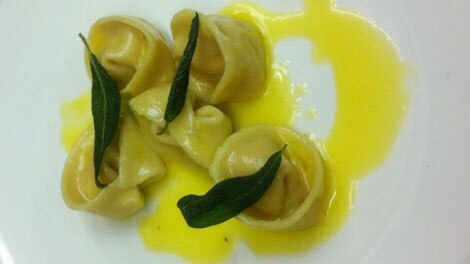 Head chef Nathan Morphett and Franceso Ravanelli from Melbourne’s Il Solito Posto shares a recipe for pumpkin tortellini. Nathan describes making the pasta from scratch as "a labour of love" that, although takes a little more effort than buying ready-made, has a huge payoff in terms of flavour and quality. It's an elegant way to impress your guests.
Head chef Nathan Morphett and Franceso Ravanelli from Melbourne’s Il Solito Posto shares a recipe for pumpkin tortellini. Nathan describes making the pasta from scratch as "a labour of love" that, although takes a little more effort than buying ready-made, has a huge payoff in terms of flavour and quality. It's an elegant way to impress your guests.
↧
Mrs Maria's stuffed tomatoesMrs Maria's stuffed tomatoes
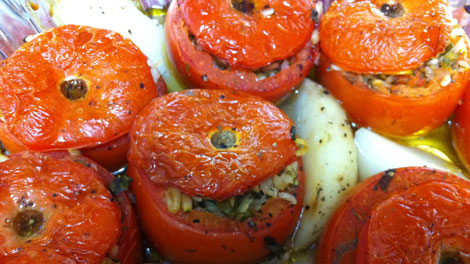 Mrs Maria is a dear friend of my aunt Stavroula. She gave me this recipe to include in my cookbook, My Greek Family Table.
Mrs Maria is a dear friend of my aunt Stavroula. She gave me this recipe to include in my cookbook, My Greek Family Table.Mrs Maria was born in Kos, one of the islands in the Dodecanese. Kos is the island where the father of medicine, Hippocrates, was born. The main square where Hippocrates’ platanos tree, or plane tree, stands, where he supposedly used to teach. From July to August a special festival in Hippocrates’s honour takes place in the town.
Mrs. Maria recalls being 12 years old when World War II began. First the Italians occupied Kos. They attempted to crush Greek culture by taking away their language and their faith. They closed down the churches and the schools. The situation became much worse when the Germans came to Kos. They bombed the islands and caused a lot of destruction. Everyone on the island went hungry because there was no food.
At the age of 23, Mrs Maria came to Australia by ship. Together with her husband and four children, she hoped for a brighter future. Australia had been advertised in Greece on posters and billboards as a land of opportunity, where everyone was guaranteed work and a better life. She packed very few possessions to take to Australia, among them her cherished icons and two vases from Alexandria.
Despite being very happy in Australia, there are some things Mrs Maria still misses about Greece, and she cooks many traditional Greek dishes, such as stuffed tomatoes and lamb. She feels it’s important for her to share her recipes with non-Greek Australians to ensure they survive.
This recipe is very easy to make and uses only a few simple ingredients. I asked Mrs Maria why she does not add parsley to this dish as I do. She replied that her uncle was a chef and his rule was that parsley should not be paired with meat except when added together with finely chopped onions to souvlakia.
↧
Fetta-and-yoghurt dipFetta-and-yoghurt dip
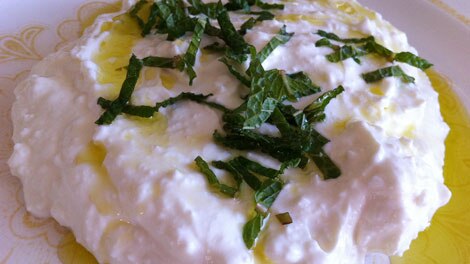 Place the fetta and spring onions in a mortar and pestle, or blender. Pound or pulse until smooth. Add the olive oil and yoghurt, and mix well.
Place the fetta and spring onions in a mortar and pestle, or blender. Pound or pulse until smooth. Add the olive oil and yoghurt, and mix well.Transfer to a bowl. Drizzle with the remaining olive oil. Scatter with mint to serve.
Serve immediately or chill for 1 hour before serving. (Garnish after refrigeration.)
©2012 Maria Benardis. All Rights Reserved.
↧
Zucchini-and-haloumi frittersZucchini-and-haloumi fritters
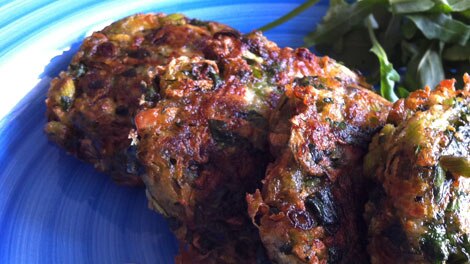 The zucchini, or squash as it is also referred to, is native to the Americas. Christopher Columbus originally brought seeds to the Mediterranean region and Africa. The Italians cultivated many varieties, and zucchini comes from the Italian name zucchina.
The zucchini, or squash as it is also referred to, is native to the Americas. Christopher Columbus originally brought seeds to the Mediterranean region and Africa. The Italians cultivated many varieties, and zucchini comes from the Italian name zucchina.In Greece, zucchini is usually fried and accompanied with skordalia; steamed; stuffed with rice and meat; or braised with other vegetables, meat or poultry. It is served as a mezze or as a main dish, especially during fasting seasons.
The zucchini flowers are also stuffed the same way as dolmades.
Of course, where would one of the Greek national dishes “mousaka” be without this humble addition?
There are hundreds of keftedes or fritters made in Greece. Every region has its own fritter and this is one of my favourites.
The zucchini is also high in folate, potassium and vitamin A.
↧
↧
Fried crumbed tomatoesFried crumbed tomatoes
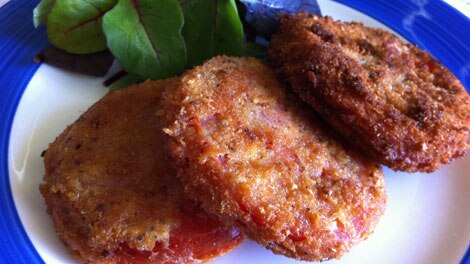 Tomatoes are extremely versatile and there are hundreds of varieties: green, yellow, orange, tiny to huge, spherical to irregular, juicy or not, acid or sweet or balanced, strongly flavoured or not... the list goes on.
Tomatoes are extremely versatile and there are hundreds of varieties: green, yellow, orange, tiny to huge, spherical to irregular, juicy or not, acid or sweet or balanced, strongly flavoured or not... the list goes on.Many types of tomato are grown in Greece, including some varieties that are common only in Greece, such as the Athenian Batala of Vravrona and the “tomatakia” of Santorini. It is not unusual to hear people in Greece refer to Greek summer as the “tomato season”.
Probably the most usual way of eating tomatoes in Greece, is to sprinkle a little bit of salt, oregano and olive oil over the tomatoes. Combining tomatoes with fetta, and, again, a little bit of oregano and/or basil leaves and olive oil, is another traditional plate. Not to mention Greek salads and all their variations. Dako is a specialty on the island of Crete.
Tomatoes are a good source of vitamin C and antioxidants.
This is one of the many ways I enjoy tomatoes in summer.
↧
Tomato, fetta and basil saladTomato, fetta and basil salad
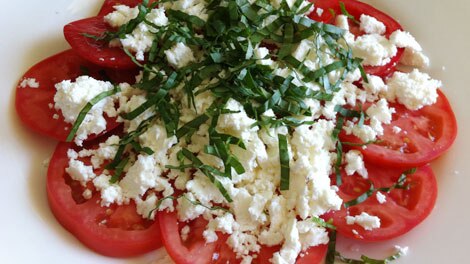 One of the main ingredients in this salad is basil – the crowning herb in Greek cuisine. Basil is one of the most sacred symbols of Christianity and it is used in the Greek Orthodox Church to bless its patrons and to bless people’s homes. As with all ingredients, basil must be handled delicately and respectfully.
One of the main ingredients in this salad is basil – the crowning herb in Greek cuisine. Basil is one of the most sacred symbols of Christianity and it is used in the Greek Orthodox Church to bless its patrons and to bless people’s homes. As with all ingredients, basil must be handled delicately and respectfully.Greek basil is quite different to the sweet basil variety we find here in Australia. It is a fine leaved pungent variety and has a much stronger fragrance.
Basil adorns Greek tables on festive occasions, alongside other flower arrangements, and is permanently affixed next to icons and the kantili (vigil olive oil candle). It is not unusual to find most Greek households growing basil. Many take their basil plants as gifts to the church or have their basil blessed by the priest to receive health and prosperity in their homes.
The father of medicine, Hippocrates, regarded basil as beneficial to the heart and
prescribed it for treatment of constipation and for the prevention of vomiting. Hippocrates also makes mention of a drink in Ancient Greece called “kykeon”, which was flavoured with basil, mint, celery root, coriander, dill and poppy. It would assist with digestive problems.
This is one of the many salads that we enjoy in Greece.
↧
Summer chickpea saladSummer chickpea salad
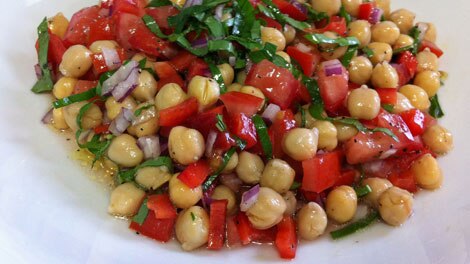 The chickpea is said to have first grown in Ancient Egypt. In classical Greece, they were called “erébinthos” and eaten as a staple, a dessert or consumed raw when young. Nowadays, in Greece, chickpeas are used predominantly in soups and fritters. The island of Rhodes is well known for its chickpea fritters.
The chickpea is said to have first grown in Ancient Egypt. In classical Greece, they were called “erébinthos” and eaten as a staple, a dessert or consumed raw when young. Nowadays, in Greece, chickpeas are used predominantly in soups and fritters. The island of Rhodes is well known for its chickpea fritters.Chickpeas are a good source of zinc, folate and protein. They are also very high in dietary fibre.
↧